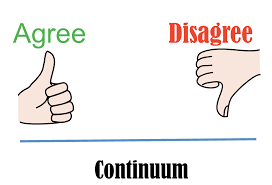Participants in adult training are not always willing to share but we, as training facilitators, know how valuable it is for them to learn from each other.
To make sure we create an engaging atmosphere and chances for participants to interact, we can implement some useful cooperative learning strategies.
Cooperative learning strategies are the answer to every awkward moment where the facilitator asks a question in the room and nobody answers.
These cooperative learning strategies are very helpful to engage every person in the room and make them interact. It is also a chance for everybody to move and to finally talk… but in a way, that serves the scope of the training. It seems magical right? Let’s see how this happens.
In a training, there are certain questions that help the facilitator to better know the audience. For example, how much do you know about today’s topic? But when asked, most of the time participants tend to nervously look around and not intervene. And even if we are lucky enough and one or two people answer, the rest of the audience would feel disengaged- and sometimes not even pay attention to those answers.
Think-Pair-Share
Instead, we could ask a question and then throw a Think-Pair-Share. We will then ask each and every person in the room to think about a possible answer. Make sure at this point to assign an appropriate amount of time to think, depending on the question of course. Then participants will have the chance to pair up, they can talk to the person sitting next to them but also move through the room and pair up as they wish. It is now time to share! Participants will talk in pairs and exchange opinions, and come up with a common answer. In pairs it is not possible not to talk or carefully listen, so that they will have the possibility to interact and to learn from each other.
In the end, the meeting facilitator can randomly pick up one or two pairs and ask them to share what they have come up with.
This cooperative learning strategy is not only meaningful, but also not time-consuming and needs little to no prep time, so it is ideal to break the training when you see your audience is getting tired or bored.

Rally Robin
At the end of every training, we sometimes summarise the topics covered during the session. But let’s face the reality: is this really the best strategy for participants to recall that information? And, if asked, how many of the participants will remember most of it?
Another cooperative learning strategy can help in increasing the retention rate in adult trainings. It is called Rally Robin.
At the end of a training session, the facilitator may ask participants a question related to what they have learned. It should be a question where multiple responses or solutions are possible. It could be as general as “List all the new concepts you have learned during the session.” Participants will work in pairs (Rally Robin) and try to come up with as many answers as possible. The first person in the pair will start with the first item, then the second will answer with a second one, then the first person has to go on with the list… And so on.
To add some competition, you can even ask participants to write down every answer they are able to think of and you can award the pair with the most answers.

Agree-Disagree-Line-Up
We all know how tiring it can be to sit and get information. Everybody sometimes feels the surge to stand up and to move. But of course it is not allowed during trainings for people just to stand up and move through the room for no reason.
A good idea could be to engage them in the cooperative learning strategy Agree-Disagree-Line-Up. The facilitator announces a statement, such as, “I feel my opinion matters in this group” “Taxes should be raised” etc. The strongest ‘agree’ participant stands at one end of the line while the strongest ‘disagree’ stands at the other. The remaining participants stand between, closer to one end or the other.

In conclusion, these cooperative learning strategies – Think-Pair-Share, Rally Robin, and Agree-Disagree-Line-Up – offer dynamic and interactive approaches to engage participants in adult training sessions effectively. By encouraging active participation, facilitating meaningful discussions, and promoting collaborative problem-solving, these strategies not only enhance learning retention but also create an inclusive and vibrant learning environment. Employing these techniques fosters a sense of involvement and shared knowledge among participants, making adult training sessions more productive, engaging, and enjoyable experiences for everyone involved.
References
Grisham, Dana L. Cooperative learning. Westminster, CA: Teacher Created Materials, 1995.
W, Johnson David. Advanced cooperative learning. Edina, Minn: Interactive Book Co., 1992.
Dr. S. Kagan–M. Kagan, Kagan Cooperative Learning, Kagan Publishing, 2009.
Exon, Rose. Cooperative learning. Torrance, CA: Frank Schaffer Pub., 1994.